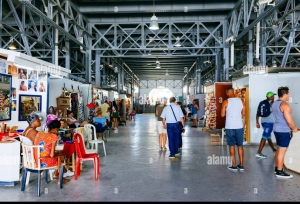please click here:
https://www.shdtimber.com/products-p3.html
Bosse wood, also known as Leplaea cedrata, is a tropical hardwood native to West and Central Africa. Renowned for its striking appearance, exceptional workability, and durability, Bosse has become a sought-after material in various industries, including furniture making, cabinetry, interior design, and even specialty applications like marine and aircraft interiors. Its combination of aesthetic beauty and functional qualities makes it a preferred choice for craftsmen and designers worldwide.
Origins and Characteristics
Bosse trees thrive in the dense rainforests of West and Central Africa, with a natural distribution range extending from Liberia to Uganda and as far south as Angola. These trees can reach impressive heights of up to 40 meters with diameters of approximately 1.5 meters.
The heartwood of Bosse is initially pale pinkish-brown, which gradually darkens over time to a rich golden or medium brown. The sapwood is pale yellowish and well-defined, providing a visually appealing contrast to the heartwood. The wood is generally straight-grained but can sometimes be interlocked or wavy, giving rise to highly decorative patterns prized by artisans.
Botanical and Ecological Notes
Bosse belongs to the Meliaceae family, which includes several high-quality hardwoods. These trees are typically found in primary and secondary forests, often near rivers or well-drained soils. They grow slowly, which contributes to their dense structure and durability. Due to habitat loss and overexploitation, Bosse is currently listed as a vulnerable species on the IUCN Red List, highlighting the importance of sustainable harvesting and forest management.
Aesthetic Qualities
Color and Grain Patterns
One of Bosse's most distinctive features is its wide range of grain patterns. It may present straight, interlocked, or wavy grains, and it can also show pommele, ropey, or fiddleback patterns that are particularly desirable in high-end furniture and decorative veneers.
The color transition from pale pinkish-brown to golden brown over time adds depth and character, giving Bosse furniture and interiors a dynamic appearance that evolves with age.
Texture and Finish
Bosse wood has a medium to fine texture and a natural luster that allows for a smooth finish. When polished, it develops a warm glow that highlights its intricate grain patterns. This makes it ideal for applications where aesthetics are paramount, such as luxury cabinetry, decorative panels, and designer furniture.
Workability and Durability
Ease of Processing
Bosse is generally easy to work with, although its silica content can moderately blunt cutting edges. Despite this, it can be sawn, planed, and carved with precision. Gluing, nailing, and screwing are straightforward, making it suitable for both hand-crafted and machine-finished projects.
Its responsiveness to finishing techniques allows artisans to achieve a variety of textures and looks, from glossy varnishes to natural oil finishes that emphasize the wood's inherent beauty.
Durability and Resistance
Bosse is a durable hardwood that exhibits resistance to fungi and dry wood borers, although it is somewhat sensitive to termites. Its density and natural oils make it suitable for both indoor and outdoor applications. It is particularly well-suited for:
-
Furniture and cabinetry: Ensuring longevity and aesthetic appeal
-
Doors and paneling: For both interior and exterior use
-
Marine applications: Due to moderate resistance to humidity and environmental conditions
-
Plywood and veneer production: Offering decorative surfaces for high-end interiors
Applications in Design and Construction
Furniture and Cabinetry
The aesthetic qualities and workability of Bosse make it a premium choice for furniture and cabinetry. Its unique grain patterns and color variations add sophistication to dining tables, chairs, desks, and wardrobes. Bosse veneers are particularly valued for decorative inlays, creating visually striking designs that can rival more expensive exotic woods.
Interior and Exterior Joinery
Bosse is commonly used in interior and exterior joinery, including door frames, paneling, moldings, baseboards, and trims. Its durability ensures long-lasting performance, while its aesthetic appeal enhances architectural details. For instance, high-end residential projects often use Bosse for feature walls or staircase railings to achieve a warm, elegant look.
Specialty Applications: Marine and Aircraft Interiors
The combination of durability, visual appeal, and moderate resistance to environmental conditions makes Bosse ideal for marine and aircraft interiors. Luxury yachts and private aircraft may feature Bosse veneers and solid wood elements to provide a high-end finish with lasting durability.
Maintenance and Care
To maintain Bosse's beauty and durability, proper care is essential:
-
Dust regularly: Use a soft, dry cloth to prevent dust buildup.
-
Avoid direct sunlight: Extended exposure can darken the wood unevenly.
-
Control humidity: Excess moisture may cause warping; use dehumidifiers in humid climates.
-
Polishing and oiling: Apply natural oils or wax finishes to enhance luster and protect the surface.
-
Repair scratches carefully: Minor scratches can be treated with wood polish, while deep scratches may require sanding and refinishing.
With proper maintenance, Bosse wood furniture and veneers can last for decades, improving in character as the wood matures.
Sustainability and Conservation
While Bosse is not currently listed in the CITES Appendices, it is considered vulnerable due to population reduction caused by logging and habitat loss. Conservation efforts focus on sustainable harvesting, reforestation, and certification through programs such as FSC (Forest Stewardship Council).
Consumers and manufacturers are increasingly seeking responsibly sourced Bosse to ensure environmental responsibility while enjoying the benefits of this premium hardwood.
Comparison with Similar Hardwoods
Bosse is often compared with other hardwoods in the Meliaceae family, including sapele, mahogany, and Spanish cedar. While these species share similarities in appearance and durability, Bosse offers unique characteristics that set it apart.
| Feature | Bosse | Sapele | Spanish Cedar | Mahogany |
|---|---|---|---|---|
| Color | Pale pink to golden brown | Reddish-brown | Pale pink to reddish | Deep reddish-brown |
| Grain Patterns | Pommele, ropey, interlocked | Interlocked, wavy | Straight, interlocked | Straight, interlocked |
| Durability | High | High | Moderate | High |
| Workability | Easy with silica caution | Moderate | Easy | Easy |
| Aroma | Cedar-like | Pleasant | Strong, aromatic | Mild, earthy |
| Common Uses | Furniture, veneers, marine interiors | Furniture, flooring, cabinetry | Doors, interior paneling | Luxury furniture, cabinetry |
This comparison demonstrates Bosse's unique aesthetic qualities and workability advantages, making it particularly suitable for decorative and high-end applications.
Market Trends and Economic Value
Bosse wood is becoming increasingly popular in international markets, particularly in Europe, Asia, and North America. Its combination of beauty, durability, and versatility has driven demand for:
-
Luxury furniture: Custom tables, desks, and cabinets
-
Architectural elements: Moldings, trims, and staircases
-
Specialty veneers: For high-end interior design projects
The economic value of Bosse is influenced by factors such as availability, sustainability certifications, and grain quality. Premium grades featuring striking pommele or ropey patterns can command significantly higher prices than ordinary grades.
Conclusion
Bosse wood is a versatile, durable, and visually striking hardwood with applications spanning furniture, cabinetry, interior design, marine, and aircraft interiors. Its unique grain patterns, color variations, and ease of workability make it a favorite among craftsmen and designers. With careful maintenance and sustainable sourcing, Bosse wood can provide both aesthetic elegance and functional reliability for decades, representing a valuable investment for luxury projects and fine craftsmanship.
Article Summary
Bosse wood, derived from the Leplaea cedrata tree native to West and Central Africa, is a versatile hardwood prized for its unique grain patterns, aesthetic appeal, and durability. Its applications range from furniture and cabinetry to marine and aircraft interiors. Sustainable sourcing ensures long-term availability while preserving its natural beauty.
Frequently Asked Questions
-
What is Bosse wood?
Bosse wood is a tropical hardwood from the Leplaea cedrata tree, native to West and Central Africa, known for its decorative grain patterns and durability. -
What are the main applications of Bosse wood?
Bosse is used in furniture making, cabinetry, interior and exterior joinery, veneers, and specialty applications like marine and aircraft interiors. -
How does Bosse compare to other hardwoods like sapele or mahogany?
While similar in durability, Bosse offers unique pommele and ropey grain patterns, a cedar-like aroma, and excellent workability. -
Is Bosse wood sustainable?
Bosse is classified as vulnerable on the IUCN Red List, making sustainable harvesting and certification crucial for long-term use. -
How should Bosse wood be maintained?
Regular dusting, controlled humidity, avoiding direct sunlight, and occasional polishing or oiling can help maintain its appearance and durability.






